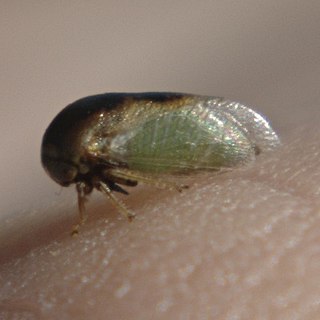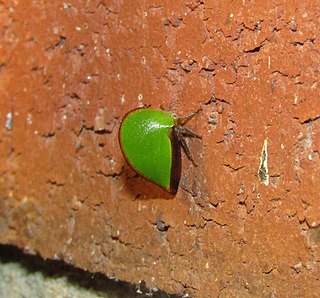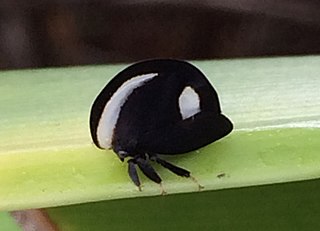
The Auchenorrhyncha suborder of the Hemiptera contains most of the familiar members of what was called the "Homoptera" – groups such as cicadas, leafhoppers, treehoppers, planthoppers, and spittlebugs. The aphids and scale insects are the other well-known "Homoptera", and they are in the suborder Sternorrhyncha.

The superfamily Membracoidea of sap-sucking true-bugs includes two of the largest families within what used to be called the "Homoptera": the leafhoppers (Cicadellidae) and the treehoppers (Membracidae). The other families in this group are quite small, and have, at various points, generally been included as members within other families, though they are all presently considered to be valid, monophyletic groups. The relict family Myerslopiidae is restricted to New Zealand and South America while the Melizoderidae consist of two genera restricted to South America. The great diversity of Neotropical taxa suggests that the group originated in that region.

Enchenopa binotata is a complex of multiple species found mostly in Eastern North America, but have also been reported in Central America. They are commonly referred to as treehoppers and are sap-feeding insects. The species in the complex look similar to each other in morphology, but are identified as different species by the host plant they occupy.

Aetalionidae are a family of treehoppers in the superfamily Membracoidea. Aetalionidae are somewhat like Membracidae in that they have one to three rows of short spines on the hind tibia but differ in having the front femur fused to the trochanter and the scutellum is completely exposed. The females have finger-like protrusions on the genital capsule. The family is mostly Neotropical. The subfamily Biturritiinae is Neotropical while the subfamily Aetalioninae has a Neotropical genus Aetalion and the sole Old World representative genus Darthula with a single species Darthula hardwickii.

Micrutalis is a genus of treehoppers in the family Membracidae. There are at least 30 described species in Micrutalis.

Smiliinae is a subfamily of treehoppers in the family Membracidae. These are bugs and include about 100 genera in 10 tribes.

Stegaspidinae is a subfamily of treehoppers in the family Membracidae.

The Brazilian treehopper is a species of insect belonging to the treehopper family (Membracidae). It has unusual appendages on its head. While Bocydium can be found throughout the world, they are most prevalent in Africa, North and South America, Asia and Australia. They exhibit limited movement and their primary food source is from the underside of leaves. They also exhibit hemimetabolous development. Treehoppers range from about two millimeters to two centimeters in length.

Archasia is a genus of treehoppers in the family Membracidae.

Membracis is a genus of treehoppers in the family Membracidae. There are more than 50 described species in Membracis.

Enchenopa is a genus of treehoppers in the family Membracidae. There are more than 50 described species in Enchenopa.

Membracis luizae is a species of treehopper described in 2010.

Antonae is a genus of treehoppers in the family Membracidae.
Trachytalis isabellina is a species of treehopper in the family Membracidae.
Trachytalis distinguenda is a species of treehopper in the family Membracidae.

Anchon is a genus of treehoppers. The name is derived from Greek: ἀγκών referring to the characteristic bend in the backward facing horn that arises vertically from the pronotum and turns at a near-right-angle over the abdomen. Two anterior horns rise outwards to the sides in many species. Species in the genus are found in the Afrotropical, Palearctic, and Indomalayan regions. They are placed in the subfamily Centrotinae.

Centrotinae is a subfamily within the treehoppers (Membracidae) and is the largest and only subfamily with a worldwide distribution of species. There are nearly 1350 species placed in 216 genera. Species in the genus make use of a wide range of host plants belonging to 105 plant families with dominant ones being Leguminosae, Compositae, Solanaceae, and Euphorbiaceae. Most species have relationships with ants that tend them for honeydew. The Centrotinae typically have the posterior pronotal process not concealing the scutellum and the forewing has the clavus truncated at the apex and having a broad apical limbus. Exceptions in which the scutellum are partly concealed can be found both in the New and Old World.
Aurimastris is a genus of treehoppers belonging to the family Membracidae. It is the newest genus of the tribe Amastrini, having been described in 2007.
Neotynelia is a genus of treehoppers belonging to the family Membracidae. It is found in South and Central America.
Tragopa is a genus of treehoppers. It belongs to the tribe Tragopini in the subfamily Smiliinae. It contains 41 species. It was described by Pierre André Latreille in 1829.















